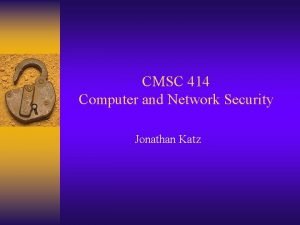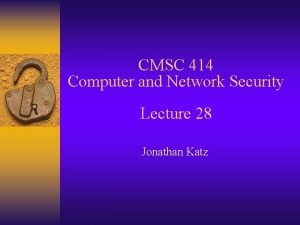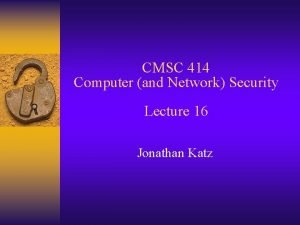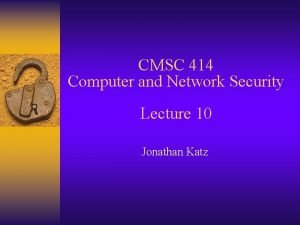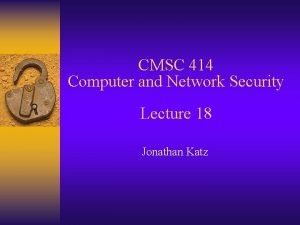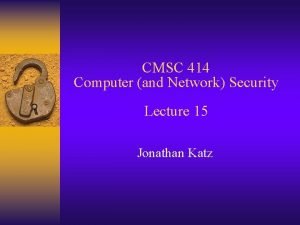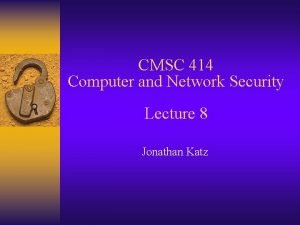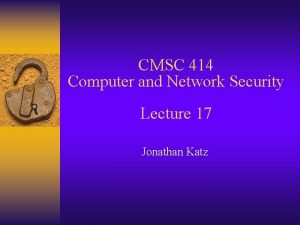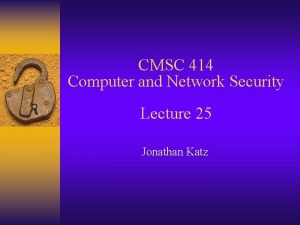CMSC 414 Computer and Network Security Lecture 14










- Slides: 10

CMSC 414 Computer and Network Security Lecture 14 Jonathan Katz

Password-based protocols ¨ Any password-based protocol is potentially vulnerable to an “on-line” dictionary attack – On-line attacks can be detected and limited – How? ¨ Off-line attacks can never be prevented, but protocols can be made secure against such attacks ¨ Any password-based protocol is vulnerable to off- line attack if the server is compromised – Once the server is compromised, why do we care?

Password-based protocols ¨ Best: Use a password-based protocol which is secure against off-line attacks when server is not compromised – Unfortunately, this has not been the case in practice (e. g. , telnet, cell phones, etc. ) – This is a difficult problem!

Password storage ¨ In the clear… ¨ Hash of password (done correctly) – Doesn’t always achieve anything! – Makes adversary’s job harder – Potentially protects users who choose good passwords ¨ “Salt”-ed hash of password – Makes bulk dictionary attacks harder, but no harder to attack a particular password ¨ Encrypted passwords? (What attack is this defending against? ) ¨ Centralized server stores password ¨ Threshold password storage

Centralized password storage ¨ Authentication storage node – Central server stores password; servers request the password to authenticate user ¨ Auth. facilitator node – Central server stores password; servers send information from user to be authenticated by the central server ¨ Note that communication with the central server must be authenticated!

Authentication tokens ¨ RSA Secure. ID ¨ PIN-protected memory card ¨ Cryptographic smartcards ¨ Aladdin e. Tokens ¨ Still need a secure protocol!

Biometrics ¨ How much entropy is there? ¨ How private are these? ¨ How reliable are they? ¨ Revocation?

Biometrics ¨ Difficult to use securely – Errors – Non-uniform – Still need a secure protocol…

Biometric authentication ¨ How can you securely authenticate yourself to a remote server using your fingerprint? ¨ Trivial solution: User Server close? Completely vulnerable to eavesdropping!

Better(? ) solution User nonce h=H( , nonce) Server ? h=H( , nonce) A single-bit difference in the scanned fingerprint results in a failed authentication!
